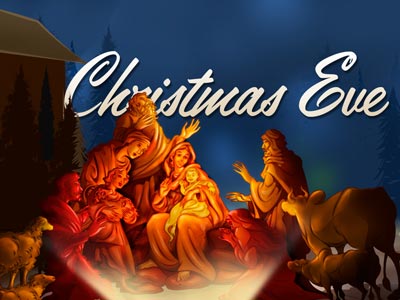-
Christ's Purpose Series
Contributed by Freddy Fritz on Dec 24, 2020 (message contributor)
Summary: In this lesson, we learn about Christ's purpose for his first and second advents.
Scripture
Today is the First Sunday after Christmas in 2020.
For the past month, we have been exploring the advents of Christ in a sermon series I am calling, “The Advents of Christ.”
So far, we have examined “Christ’s Entrance,” “Christ’s Timing,” “Christ’s Appearance,” and “Christ’s Arrival.”
Today, I would like to examine “Christ’s Purpose.” Christ’s first advent was to save the lost (Luke 19:10). His second advent, however, will be to judge the lost (Matthew 25:31-33, 41-46).
For background to our study today, let us read Isaiah 64:1-4:
1 Oh that you would rend the heavens and come down,
that the mountains might quake at your presence—
2 as when fire kindles brushwood
and the fire causes water to boil—
to make your name known to your adversaries,
and that the nations might tremble at your presence!
3 When you did awesome things that
we did not look for,
you came down, the mountains quaked at your presence.
4 From of old no one has heard
or perceived by the ear,
no eye has seen a God besides you,
who acts for those who wait for him.
(Isaiah 64:1–4)
Introduction
Some people had a very stressful load this Christmas season. Take Santa, for instance. Phillip Bump, a technology writer for The Atlantic, has attempted to provide a tongue-in-cheek answer to an important question: What exactly is Santa’s yearly workload?
Bump calculated the number of Christian children in the world and the geographic distribution of those children around the globe. After factoring in all the nuances of time zones, distance between houses, and how many children live in each house, Bump shared his conclusions about Santa’s yearly task:
[Based on CIA estimates] there are just over 526,000,000 Christian kids under the age of 14 in the world who celebrate Christmas on December 25. In other words, Santa has to deliver presents to almost 22 million kids an hour, every hour, on the night before Christmas. That’s about 365,000 kids a minute; about 6,100 a second.
Bump mentions a few caveats: not all Christians celebrate Christmas on December 25, the CIA’s data isn’t always up-to-date, and some non-Christians celebrate Christmas too. But all in all, Santa has an enormous job to do! He has to serve over a half billion kids in one night as he pulls a huge sleigh with nine reindeer, while he tries to avoid being detected and shot down by the North America Aerospace Defense Command—and don’t forget that one of his reindeer has a very shiny nose.
Santa Claus would have to possess superhuman qualities to be able to deliver so many gifts and so much love. And while some may be skeptical of Santa’s ability, we should recognize that Jesus is the only one who is truly able to deliver gifts of grace and love to people all over the world.
Lesson
In today’s lesson, we learn about Christ’s purpose for his first and second advents.
Let’s use the following outline:
1. Christ’s Purpose for His First Advent
2. Christ’s Purpose for His Second Advent
I. Christ’s Purpose for His First Advent
First, let’s look at Christ’s purpose for his first advent.
“The Hound of Heaven” is a 182-line poem written by 19th century English poet Francis Thompson (1859–1907). Although Thompson was a follower of Christ, he struggled with poverty, poor health, and an addiction to opium (which in those days was sold as an “over-the-counter” medication).
In the depths of his despair, Thompson described his flight from God:
I fled Him, down the nights and down the days;
I fled Him, down the arches of the years;
I fled Him, down the labyrinthine ways,
of my own mind; and in the midst of tears
I hid from Him, and under running laughter.
Up vistaed hopes I sped…
from those strong Feet that followed, followed after.
But Thompson also knew the unrelenting love of Jesus, “the hound of heaven.” In the poem Jesus pursues Thompson, as he writes:
But with unhurrying chase,
And unperturbed pace,
Deliberate speed, majestic instancy,
They beat—and a Voice beat
More instant than the Feet—
“All things betray thee, who betrayest Me.”
In a recent biography of John Stott, Stott refers to Thompson’s poem. According to Stott, he [Stott] owes his faith in Christ not to his parents or teachers or even his own decision, but to Jesus, “the hound of heaven.” Stott writes:
[My faith is] due to Jesus Christ himself, who pursued me relentlessly even when I was running away from him in order to go my own way. And if it were not for the gracious pursuit of the hound of heaven I would today be on the scrap-heap of wasted and discarded lives.
A story in the Bible that illustrates Jesus’ relentless love for sinners is the story of Jesus and Zacchaeus, found in Luke 19:1-10.

 Sermon Central
Sermon Central



